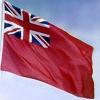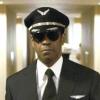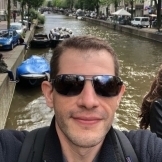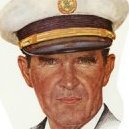
All Activity
This stream auto-updates
- Past hour
-

New Just Flight PA-38 Tomahawk On Sale Now
Cpt_Piett replied to btacon's topic in Microsoft Flight Simulator (2020)
Sorry, I almost regret saying it. I’m following all three threads. Still haven’t had the time to get it so far - but I will now 😁 Happy flying / deadly spins and blue skies! -
I watched, I didn't catch that.. what I read was they might need a week I never heard any date per say.. R.
-
Good to know, thanks!
-
The -300ER is not the version of the 777 that I would want, so I will have to wait even longer before I can consider a purchase.
-
April 2024 Asobo Developer Livestream
ATRguy replied to David Mills's topic in Microsoft Flight Simulator (2020)
I have never once seen that message in four years of this game. -
IniBuilds Beluga and A400M announced for MSFS 2024
ATRguy replied to abrams_tank's topic in Microsoft Flight Simulator (2020)
If they’re doing an A330, I’d love for them to extend it to an A340-200/300. Something about the underpowered hairdryer seems fun to fly! -

IniBuilds Beluga and A400M announced for MSFS 2024
Krakin replied to abrams_tank's topic in Microsoft Flight Simulator (2020)
The A300 is easier on my system than the Fenix is right now for me and their LAX recently got a nice optimization update. They'll sort the A310 out eventually but like I mentioned earlier, MS is the one slowing the updates down. -
rjquick started following Historical weather planned for MSFS 2024
-
Historical weather planned for MSFS 2024
rjquick replied to abrams_tank's topic in Microsoft Flight Simulator (2020)
Disappointing. I was hoping to recreate some World War II flights using the actual weather at the time. -
A very short video that doesn't show either weather depiction in the best light. Yes, MSFS is mostly cumulus, and that is true for weather in the distance. Even in your short video, ASFS cloud depiction was WAY better.
-

PA-38 Tomahawk (MSFS) | Product Overview | Just Flight
Paul K replied to Poppet's topic in Microsoft Flight Simulator (2020)
You could probably include A2A's Comanche in that category, but I know what you mean. -
Local Historical Disgrace for the world updates?
Fiorentoni replied to Fielder's topic in Microsoft Flight Simulator (2020)
AKA the spiritual predecessor of the A340-300. - Today
-
Simworks Studios Updated PC-12 Today 4-18-2024
JWvdH replied to jwhak's topic in Microsoft Flight Simulator (2020)
You know you can disable the interconnect? There are video’s on YouTube that show how to do it. I have done it and I prefer to fly that way. -
Typically these days we have a primary product team, then a much smaller support team to do the followups. The support and tidy group is usually entirely separate from the teams leading flagship titles. We are lucky that the sim has proven popular in sales, which makes a support team cost effective to create all the service packs. Sometimes in the lifecycle of a product we have to draw a line on service packs simply because the cost to develop the pack outweighs the current strength of sales revenue, based on a calculated "per head revenue" generation of everyone in the team. Keeping service teams smaller really keeps the costs down and drives that equation of salary vs revenue contribution for each dev to something manageable.
-
Flight from Haiti For Saturday, April 27, 2024 Michael MacKuen Today we take part in an on-going evacuation. Since the most recent breakdown of government in Haiti and the ongoing chaotic rule by gang violence, numerous middle-class and professional-class Haitians have chosen to leave the country – for fear of their lives. We shall pick up a good handful of refugees from Port-au-Prince and then the southern Tiburon Peninsula in Haiti and transport them to the Kingston, Jamaica from which our passengers will move on to their ultimate destinations. At the end of the day, we shall fly to Montego Bay for a bit of R&R. Dawn Flight Over the Lake and Under the Sea We depart from the Dominican town and airport Barahona Maria Montez [MDBH] at 5:30am local. It may be a good idea to fly low because we want to surprise the gang gunmen early on a Saturday morning. For practice some pilots may want to fly over Lake Enriquillo while under sea level. (No swimming. At 150ft below sea level, the salty lake is home to the Caribbean’s largest crocodile population.) Landing without announcement at officially-closed Port-au-Prince Toussaint Louverture [MTPP], we want to be careful and quick. The airport is surrounded by armed gangs, police stations burned, hospitals seized and doctors kidnapped and held for ransom. Our frightened passengers are gathered at the UN Log Base (the UN headquarters) at the far southeastern end of the runway 28/10. We load and depart immediately without the niceties of ATC. In another time, we might look down at the 2004 Bicentennial Tower or the adjacent National Palace (which collapsed during the 2010 earthquake and has not been rebuilt.) We set course for Jacmel [MTJA], just over the mountains on the Tiburon Peninsula. (This peninsula lies on a deep fault that has generated a number of destructive earthquakes, including two major ones in the last 14 years.) Separated from the turmoil in Port-au-Prince by the mountains, Jacmel is an old city with a laid-back culture, grand historic houses of the eighteenth and nineteenth centuries, and a nationally important arts district. We land on Runway 02 and find our passengers hunkered down in a green apartment building at the north end of the runway. A speedy turn-around finds us departing westward to Les Cayes Antoine-Simon [MTCA]. This medium-sized city is distant from the center of Haiti and has been an important port for the export of sugar and coffee. The white-sand beaches and annual music festival have attracted some visitors from abroad – at least before the current crisis. The airport renewal, with a modern terminal and an extended runway, was intended to open up the southern coast for tourism. Our final stop in Haiti is on the northwestern shore of the peninsula. Without main roads, the almost-isolated Jérémie [MTJE] was long the bastion of Haiti’s mulatto elite and earned the title “City of Poets” in honor of its literary and artistic community. Jérémie went into a steep decline after 1964 when Papa Doc Duvalier ordered the closure of its port as a reprisal for local opposition to his regime. But by the turn of the current century, the town had looked to be building momentum for a bright future with a main road and a regional airport connecting with the rest of the country. Then it was hit by the massive 2010 earthquake, and in 2016 Hurricane Matthew practically leveled the city, and in 2021 it was the center of a 7.2-magnitude earthquake which led to further devastation. Nonetheless, people in the city are stepping up and moving forward. Today we collect a cadre of international aid workers who have been rebuilding the town as well as dealing with the ongoing humanitarian crisis. Our 140nm flight to Jamaica is punctuated by our passing over small and uninhabited Navassa Island that is claimed by both Haiti and the United States. In 1857 the US appropriated the island under the Guano Islands Act for the rich guano deposits found on the island. A Baltimore company built a large mining facility to employ more than 140 contract workers to dig out the guano by dynamite and pick-axe and haul it onto boats at Lulu Bay. Between 1857 and 1898, 1 million pounds of guano were removed from the island. Then, to safeguard access to the new Panama Canal, the US built the Navassa Island Light in 1917 ... and then dismantled it in 1996. While the island had been essentially uninhabited since 1900, it was formally made a National Wildlife Refuge in 1999 and has been a nature preserve since that time. We head for Jamaica which in 1494 was claimed for the Spanish by Christopher Columbus. However it was forcibly seized by England in 1655 and it became a key part of the colonial British West Indies. As with much of the Caribbean, the early success depended on the sugar plantations worked by enslaved Africans. After emancipation in 1834-1838, the former slaves left the plantations for independent farming, and plantation owners then recruited Indian and Chinese workers. By mid century the population was mostly of African origin with substantial numbers of European and Asian and mixed-race people as well. Jamaica became an independent country in 1962. It has been blessed with a functioning two-party democratic government, with mixed successes and failures. (Democratic government is not always terrific, but it is typically better than the alternative.) The economy has had its booms and busts. And some areas of urban poverty have spawned gang warfare and a concomitant rise in violence. In 1962, at independence, the murder rate was 4 per 100,000 (one of the lowest in the world) and in 2022 it was 53 per 100,000 (the highest in the world). Parts of Kingston and Montego Bay can be disturbingly dangerous. Other parts, of course, are doing well enough and a few are prosperous. We land at Ken Jones Aerodrome [MKKJ], a small field which serves the tourist town Port Antonio just to the east. The local port was best known for shipping bananas and coconuts, but then tourists started coming back in the empty banana boats. The spot was glamorized by Hollywood in the 1940s and 1950s, most famously by Erol Flynn who came in 1946 and purchased an island on which he hosted spectacular parties. We climb over the Blue Mountains which dominate the eastern third of Jamaica. The mountains rise from the coast to their summits (over 7,000 ft) in a span of 10 miles, making this one of the steepest general gradients in the world. And that topography produces a micro-climate that is relatively cool and moist. The world-famous Jamaican Blue Mountain Coffee, which commands premium prices, is cultivated on slopes of 3,000-5,500 ft by former Maroon communities established by escaped slaves. We descend over Kingston, the capital city at over a million. This is a commercial-business-government city rather than a tourist destination. Points of interest include the grand State House of Jamaica (or Kings House), which hosts the Governor General, and the nearby Jamaica House, the residence and offices of the Prime Minister. Marked, but not modeled, is the popular Bob Marley Museum. We pass over Independence Park, a sports complex that features the National Stadium. And we land at Kingston Norman Manley Airport [MKJP] which stands on the Palisadoes, an isthmus that forms the large natural harbor south of the city. This is an older airport (1948) but has received some functional modernization during the last twenty years. It is a fairly busy hub with connections throughout the Caribbean, eastern North America, and Great Britain. Just west, on the same Palisadoes, lies Port Royal. During the seventeenth century this was Jamaica’s main town and, by design of the British government, the primary port for privateers and pirates who amassed great fortunes preying on the Spanish treasure fleets. The wealthy city was a wild place whose consumption of alcohol was legendary, the true home of the “Pirates of the Caribbean.” It was badly damaged by an earthquake in 1692 and a fire in 1703. No longer a haven for pirates, most people moved onto the mainland to populate Kingston as a more conventional colonial town (one thought to be too unsavory for a government capital). We cross the island to the tourist beaches near the town Ocho Rios and its nearby airport Ian Fleming [MKBS]. During the mid-twentieth century this had been a quiet “tropical paradise” which was a home-away-from-home for British luminaries such as Noël Coward and Ian Flemming. But in recent decades, it has become an attraction for beach-seeking vacationers. The small local airport was expanded to attract direct flights from abroad – with modest success. (Noted but not modeled is Ian Flemming’s 1950s estate Goldeneye that has since been upgraded to a trendy high-end tropical resort for the rich-and-famous.) Turning west, we journey along Jamaica’s northern coast which is now dotted with smaller beach communities. At Falmouth, the main tourist end of the island comes into view. If we look carefully, we can see the splendid Rose Hall, a grand 18th century plantation house that has been restored and become a popular place to visit. (A nightly event focuses on the “White Witch of Rose Hall,” a fictional account of treachery and murder that is only vaguely linked to the true story.) Just proximate to the Rose Hall estate is the huge blue-roofed Montego Bay Convention Center. (This landmark is more visible from the air.) We reach our final destination Montego Bay. This is Jamaica’s second city after Kingston. It hosts second homes for upper-class Jamaicans from Kingston who enjoy the fine restaurants, vibrant night life and shopping. World-wide it is seen as a very attractive vacation destination with a cruise line terminal and beaches and resorts all along the northern coast. Montego Bay is economically central for Jamaica as this region constitutes the largest portion of the critical tourist sector. (If we have time, we might circle the town and bay.) We land at Montego Bay Donald Sangster [MKJS], Jamaica’s busiest airport with connections to many major cities in both North America and Europe. We would all love to get some first-hand accounts of the area ... anyone? Documentation The flightplan can be found here. Aircraft This is a longer flight of about 450nm. (140nm will be over the Caribbean sea between Haiti and Jamaica. If desired, we can expedite this leg.) You want something that will “fast cruise” at 200kts and carry a few passengers. Popular options include among others the Cessna 414, Pilatus PC-12, Daher TBM 850/930, and (slightly faster) the Beech King Air 350. I shall choose the not-quite-finished SWS PC-12. You should, of course, fly what you like. Additional Scenery All the airports and the POIs are in the default simulator. Several addon airports will enhance the scenery appreciably. Thanks to the talented addon creators. Port-au-Prince [MTPP]. Viktoren69 Jeremie [MTJE]. Mountainair Port Antonio Ken Jones [MKKJ]. Sadalachibia Kingston Norman Manley [MKJP]. Starseed Boscobel Ian Fleming [MKBS]. Sadalachibia Temporarily, you can obtain the package here (7MB). Time and Weather For takeoff on Saturday, set the simulator at 5:30am local for April 27, 2024. We typically prefer real weather and will follow form if the weather is good. If not, I recommend Josh’s ”NZ” or the default “High Clouds” preset. Multiplayer Particulars Date and time: Saturday, April 27, 2024. 1800 UTC RTWR Multiplayer Discord Channel Microsoft Flight Simulator Multiplayer: United States East server. If you want to help others enjoy the multiplayer experience, don't forget to enter your aircraft details on the multiplayer spreadsheet (linked here). Please be kind enough to enter the title exactly as it stands in the title=”xxx” line of the aircraft.cfg file. Your courtesy will save others a lot of time and effort. Thanks!
-
I'm pretty sure it's embedded in the license file that's generated by the Flight1 wrapper. You might reach out to Flight1 and ask them if they can change that.
- 1 reply
-
- 1
-

-
No they cannot be ignored (for technical reasons), so MSFS default turbulence will always be active. The AS devs said they created AS with MSFS turublence set to LOW, so you might want to set that too.
-

Landscape around KDCA by default or addon?
G550flyer replied to Area's topic in Microsoft Flight Simulator (2020)
Fact! -
just to add to the moaning, I care not about window sizes or spaceship loading screens or ANOTHER airbus, but I do want to fly a 777-300
-

Nvidia frame GEN possible screen bug?
Maxis replied to alexgorider's topic in Microsoft Flight Simulator (2020)
Card being pushed too hard (Especially if the framegen is uncapped) and the hardware (Graphics Card) is failing to keep up which is producing artifacts. Also important for Nvidia Cardholders since you cant use framegen in DX11 up to 1080p display = 12GB Vram up to 1440p display = 16GB Vram 4K and above= Over 16GB Vram I also recommend to be mindful about using 8K resolution repaints as well if your flying in DX12 with Framegen. Try to stick to the 4k Versions. -
While that may be your opinion I challenge your statement with four PMDG 737s in service, each as robust and feature filled as the ones modeled for P3d. Add to it the Fenix a320 and a myriad of default aircraft now with more features and advanced avionics than in any previous sim, the Longitude and the 787 and 747 come quickly to mind. This ain’t yer grandfathers MSFS and to declare it as only for VFR and “Eye Candy” can be viewed as quite short sighted, bordering on disingenuous. My Opinion only but an opinion of someone who owns both MSFS 2020 AND P3D Ver 2.0, 3.0, 4.0, 5.0, and now 6.0 -B
-
Nvidia frame GEN possible screen bug?
AnkH replied to alexgorider's topic in Microsoft Flight Simulator (2020)
I was just about writing this. The screenshot sadly looks like failing VRAM. Might be that the use of the FG mod somehow triggers this because it fills the VRAM up faster and more consequently? -
JaneRachel started following SU 15 Delayed again
-
Its very much the nature of the games/sim industry. In 44 years in the games industry (and sims too), its not the spec that kills you, but the bugs that suddenly defy squashing. I had a major title held up at EA with a crash bug that took my team weeks to find. It was a simple thing, in a couple of lines of code, but brought the entire project to its knees. We had pretty much every coder and myself hunting through code to track down. Conversely, I have seen bugs that look like they are going to be mega difficult, that I have ended up fixing over a cup of coffee in minutes. You are right about hundreds of people, although in terms of many issues, that boils down to just a few talented programmers to fix, with the majority of teams being art, design etc etc.. The specialist programmers are a minority on most games and sims (for lots of reasons, but I wont write an essay 🙂 ) Back when people paid me to be a programmer, rather than to run studios and publishing companies, we had all sorts of issues, for example, with Alien Vs Predator for Atari. It was coded by just two of us, myself and Mike (a very talented programmer). Some days it was bug city which we had to splat like the Aliens. Other days life was smooth. The moral is you can never tell and projects have a life of their own when it comes to shipping dates, despite so many processes we now have in place in the big studios. I routinely factor in a 20% time contingency on every project with the studios that I lead (which indeed can be hundreds of people now). Its why sometimes that many of us wish that we made business software which is an order of magnitude easier than 3D software and games, that come with animation, physics et al 🙂 Jane










